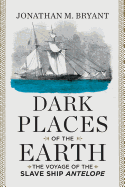
Thanks to Steven Spielberg's movie Amistad, many today are familiar with this aspect of early America's slave trade; John Quincy Adams's argument before the Supreme Court freed the slaves of the Amistad. However, there was an earlier case dealing with a slave ship that helped decide the Amistad case. Jonathan M. Bryant's Dark Places of the Earth is about that case, "one of the most dramatic, important, and unjustly forgotten stories from slavery's traffic history."
In 1820, the Spanish ship Antelope, carrying nearly 300 African slaves--many of them children and teenagers--was seized by the U.S. Revenue Cutter Service near Florida. Slavery was legal in much of the United States, but the Atlantic slave trade was not. Courts would need to determine if these Africans were slaves and, if they were, to whom they belonged.
Bryant (How Curious a Land) traces the history of the ship as it changed hands many times. He then recounts the slaves' experiences in Savannah, Ga., as courts took up their plight while some began dying from plantation work and disease. He meticulously unwinds the years-long, complex legal history that finally led to the case being heard by the six justices of John Marshall's Supreme Court, four of whom were slave owners. Arguing for the slaves' freedom was Francis Scott Key, a great lawyer and superb speaker; the courtroom battle took five days. From the West African shores to Georgia, Washington, D.C., and, finally Liberia, Bryant's riveting history of this case and these slaves is a remarkable one. --Tom Lavoie, former publisher

